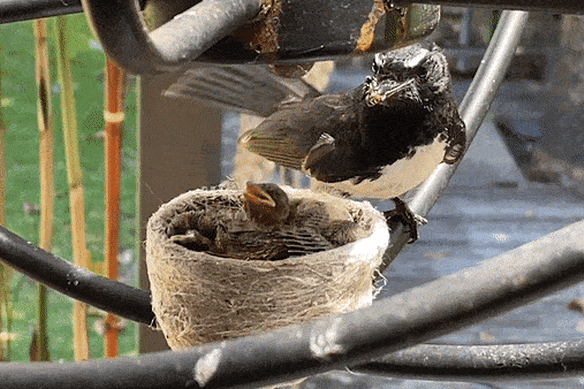Rainbow lorikeets, crested pigeons, crested ravens and magpies also increasingly dominate Melbourne’s skies, parks and gardens, while smaller, less adaptable species are becoming harder to find.
Even some pest species such as blackbird and common starling are competing.
Obviously, the landscape we live in now is not the same as the one they evolved in, so we have some native species that do really well, like rainbow-crested cockatoos and sulphur-crested cockatoos, because Our existence has grown. It changed the landscape in a way that pretty much rolled out the red carpet for them, Naimo says.
Popular street, park, and garden trees such as flowering eucalypts, bottlebrush, and grevilleas provide a smorgasbord for these species, but keep smaller honeyeaters out of sight.
Naimo coordinates the urban birding program at Birdlife Australia, an organization that conducts annual bird counts in each state and territory, where an estimated 100,000 people observe birds in their backyards and local parks.
This annual bird count has been the key to important research showing that birds in Australian cities are increasing and birds are declining and generally at risk of disappearing.
Dr. Carly Campbell, an environmental ecologist with the Queensland University of Technology, has analyzed decades of data from annual bird counts in Australia’s four largest cities.
His research found that “introduced species, historically prominent in Australian urban bird communities, are declining in all four regions, while a small group of native urban exploiters is expanding.”
Campbell’s study found that relative declines over time in introduced species including the common myna, house sparrow, spotted dove and common blackbird are visible, but this is not necessarily a positive outcome for biodiversity.
Instead, the data show the emergence of a few dominant native species that negatively impact many other native birds.

The data shows that Willie’s tails are one of the species increasingly pushed out of Melbourne’s urban environment.credit: No
“This shift may be even more detrimental to urban bird biodiversity,” the study found.
Native birds that are declining include magpies, laughing kookaburras, eastern rosella, black-faced cuckoos and galas, and dozens more.
Upload
In Melbourne, Campbell analyzed citizen science databases dating from 1972 to 2019.
Introduced species including the common blackbird and starling have declined significantly in prevalence, but so have native birds including the eastern yellow robin, wagtail willie and crimson rosella.
“You can see birds in the backyard that are really iconic, like the willie-tails, which are small but very lovely, but they’re not doing well in Melbourne,” Campbell said. And I’m guessing this is due to changes favoring species like the noisy miner.
The length of the list of birds seen each year in bird counts has also decreased over time in Melbourne, further evidence of some less adapted species being pushed out of the urban environment entirely.
Campbell said people should not assume that these species find refuge in non-urban areas.
Finally, there are limited resources for birds, so if a patch of remaining forest is saturated with abundant birds, birds leaving an urban area may not be able to move. there.”
The Morning Edition newsletter is our guide to the most important and interesting stories, analysis and insights of the day. Register here.
#Aggressive #native #birds #driving #competitors #Melbourne